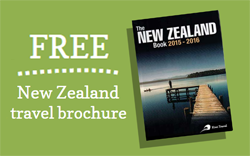You’ve been contemplating a self-drive holiday for a while now and ready to take the plunge. But what do you need to know in order to drive in New Zealand?We’ve put together this handy guide to give you the facts and ensure that when you arrive in New Zealand that you are ready to drive off in to the sunset!
LicenceIn order to drive any vehicle in New Zealand, you must have an appropriate licence. You’ll also need to produce this when picking up your rental vehicle to confirm your driving accreditation.
You’ll be able to drive in New Zealand if you have one of the following:
- a current and valid overseas licence or driver permit, and
- you haven’t been given a disqualification or suspension in New Zealand previously, and
- if your overseas licence is in English, or you have an accurate translation of the licence
For more information on licences refer to the New Zealand Transport Authority.
Note: You need to carry your driver’s licence with you at all times when you get behind the wheel of a vehicle in New Zealand
New Zealand Road Rules Underpinning the need for a licence is the need to be aware of and take into account New Zealand’s road rules.
Underpinning the need for a licence is the need to be aware of and take into account New Zealand’s road rules.
New Zealand’s climate, roads, signage and driver behaviour can be somewhat different to that of your home country. Be sure to read through the road rules to ensure your safety and understanding of New Zealand driving conditions.
You can review the road code online or purchase a hardcopy version for ongoing reference, and when you’ve studied up, take a theory test to confirm your understanding. You can purchase some test exams (which are the equivalent of the theory-based tests sat by New Zealanders to ensure theory competency and gain their ’learner’ licence) from www.roadcodepractice.co.nz.
Tips for driving in New ZealandThe New Zealand Transport Authority (NZTA) has put together a great resource for Driving in New Zealand. This 6 page document provides a brief overview of the main points of consideration if you are foreign to New Zealand roads and subsequent legislation.
You can view this document in a variety of different languages – please take the time to familiarise yourself with this document.
Some of the key highlights are:
Keep LeftIn New Zealand, driving occurs on the left-hand side of the road. Stick left at all times, and if you aren’t comfortable driving at the speed limit, pull over to the left of the road (road-side) to allow any vehicles behind you to get passed.

This is the one road rule that you need to ensure is abided by - if you drive on the right side of the road at home and fail to adhere to this, you may become an unpleasant statistic of a head-on collision. Please be careful. There is saying in left-hand drive countries ‘Left alive. Dead right.’[1] Stay right at all times.
Alcohol & DrugsNothing new here - don’t drink or use drugs and then drive. In NZ, there are strict laws against this and penalties are severe.
It is also important to note that there are different limits for alcohol consumption and driving, depending upon your age.
- If under 20 years old - a zero alcohol limit. This means you are not entitled to drive if there is any alcohol in your blood or breath.
- If aged 20 years and over, the alcohol limit is 50 milligrams per 100 millilitres of blood or 250 micrograms per litre of breath.
- The safest action is to not consume any alcoholic beverage if you are going to drive!
Hand-held Mobile PhonesIt is illegal to use a hand-held mobile phone in New Zealand when driving unless it is completely hands-free or mounted securely to the vehicle – and touched infrequently and briefly. If receiving calls or placing calls, it is a requirement that the driver remains hands-free at all times (i.e. use Bluetooth etc.) In regards to texting, it is completely illegal to write, read or send text messages on a mobile phone while driving.
Seat Belts (Safety Belts)All people in a vehicle must be in a seat belt or child restraint, irrelevant if they’re in the front or back seat. If you’re bring the children along on your self-drive holiday, note that children under seven years of age must be seated in an approved child restraint. Children aged seven must be secured in an approved child restraint if such a restraint is available, but in the likelihood of a rental, they can be secured in a normal seat belt to meet requiremensts.
Give wayIn general, if you’re turning, give way to all vehicles that are not turning.
Always use your indicator when turning! You’re also required to give way at an intersection when you see this sign.
If you are approaching a roundabout, you will see the sign to the right.
You are required to give way to all traffic on your right before you enter the roundabout.


Travelling TimesSome of New Zealand’s roading network can be characterized by many hilly, narrow or windy roads. What this can mean is that it is quite easy to misjudge how long it may take to travel to a particular destination.
New Zealand roads may be narrower than you’re used to, cover hilly terrain and vary from motorways (freeways) to unsealed gravel roads. Along with changing weather patterns, New Zealand roads can be challenging, even for the most accomplished driver – it is important to drive to the conditions, which includes the road, the weather, and the combination of the road and weather.
If you’re looking to visit New Zealand in the winter months, snow and ice can make the roads even more hazardous, particularly around mountain passes. Rental vehicle companies will often supply chains if you’re likely to be driving in these conditions – make sure you know how to fit them before setting out.
While on a map destinations may look close together and the equivalent of a short trip in the vehicle, the actual travel time can vary depending upon the weather and the typography covered.
Driving SpeedsThroughout New Zealand, speed limits are governed by signs that indicate the maximum speed you can travel. Remember, at times you may need to drive at a slower speed due to road, weather or traffic conditions.
The open speed limit is generally 100km/hr throughout the country. In urban areas, the speed limit is usually 50km/h unless a sign says otherwise. Follow the speed signs to ensure that you drive at the correct speed.
If you come across a sign that is circular with a thick black line running diagonally across it, this is a Speed Limit Derestriction sign. What this denotes is that the 100km/he maximum applies in this area but drive to the conditions.
One Lane BridgesNew Zealand has a number of roads that have one-lane bridges where vehicles travelling in one direction must give way to vehicles going in the other direction.
You can refer to the signs that are posted that will indicate which way the traffic must give way for the other.
The signs below show an example of the types of signage you can expect. The smaller red arrow show the direction who is required to give way.

Rail Way Crossing A network of train tracks operate throughout the country. Only half of New Zealand’s 1500 public rail crossings have automatic alarms and flashing lights.[2] If red lights are flashing, stop and only proceed once the lights have stopped flashing.
A network of train tracks operate throughout the country. Only half of New Zealand’s 1500 public rail crossings have automatic alarms and flashing lights.[2] If red lights are flashing, stop and only proceed once the lights have stopped flashing.
At non-automated crossings, you can expect to see give way, stop signs with the image here. If a train is visible, immediately stop the vehicle (off the track) and await for it to pass – only venture over the track when safe to do so.
When you see a give way sign, slow down and be ready to stop and only cross the track if there are no trains approaching.
Other Signs of interest:
Signing offWe look forward to seeing you in New Zealand and you’ll enjoy the freedom that a self-drive holiday provides. Your safety, and those other users of the road, are paramount. Take care at all times and adhere to the signage you see.
Driven in New Zealand and think we’ve missed something? Leave a comment below and we’ll add it to our list.
[1] http://www.changesinlongitude.com/tips-to-drive-on-the-left-side-of-the-road/
[2] https://www.nzta.govt.nz/assets/resources/driving-in-nz/docs/driving-in-nz-english.pdf







